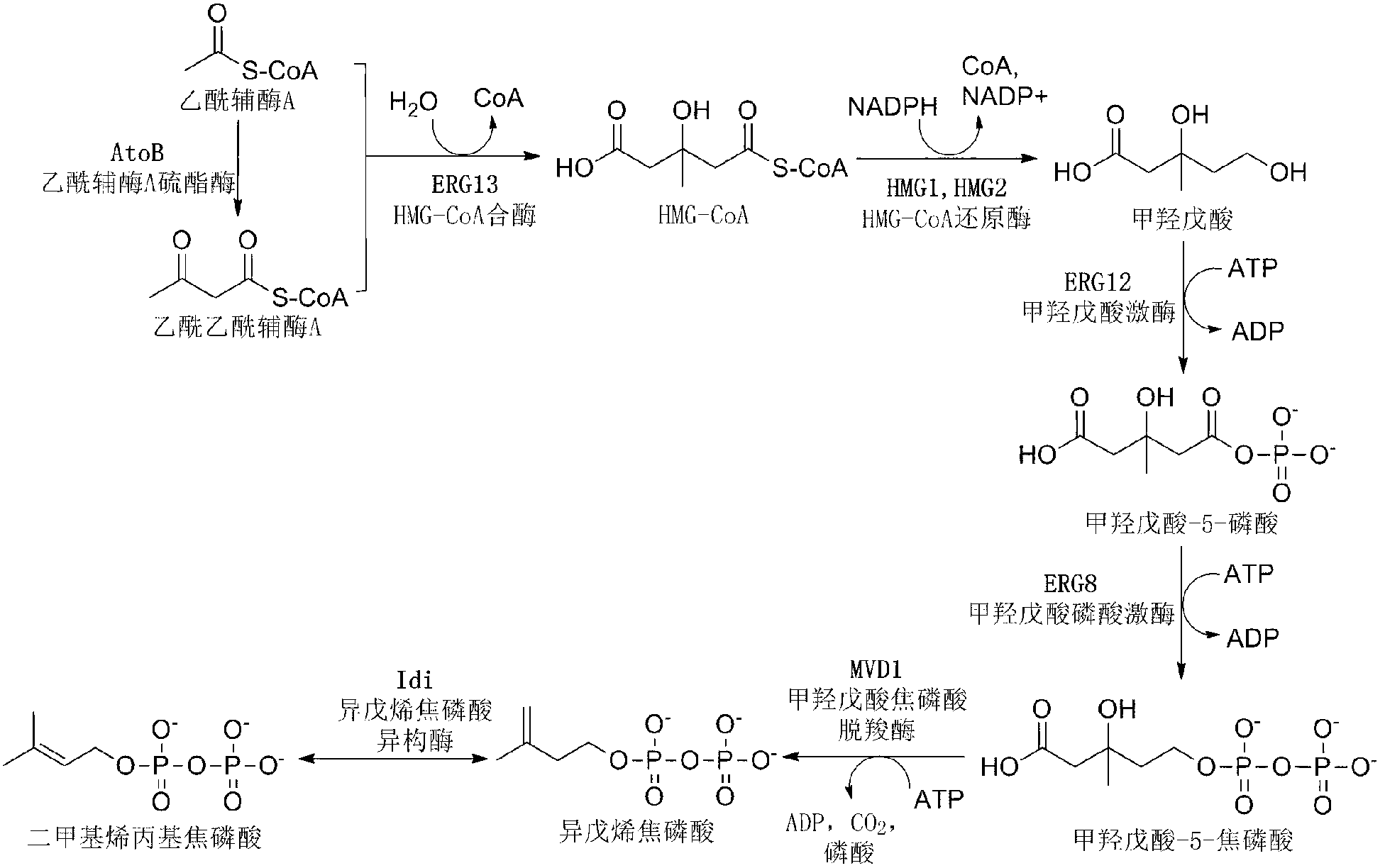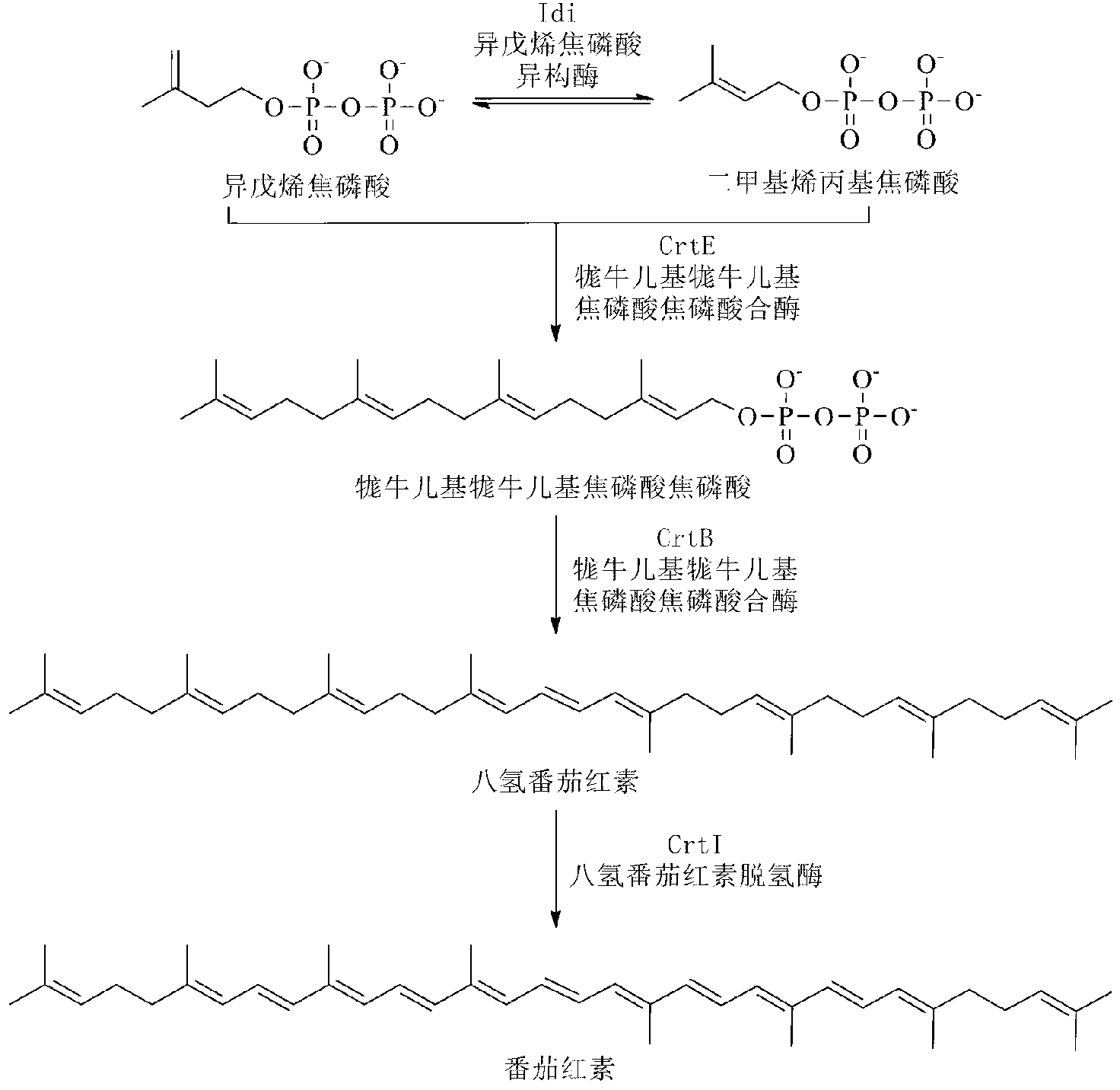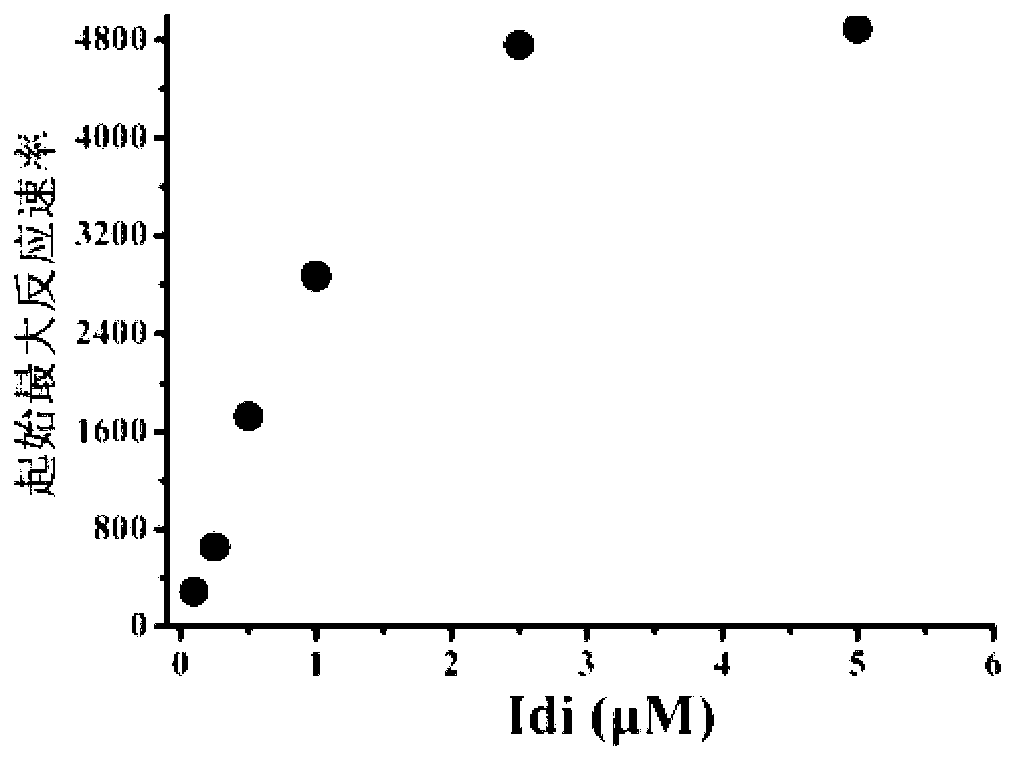Bacterial strain for producing lycopene and application of bacterial strain
A technology of lycopene and bacterial strains, which is applied in the field of synthetic biology, can solve the problems of instability, low natural extraction yield, and low plant fruit content, and achieve the effects of increasing yield, shortening fermentation cycle, and good industrial application prospects
- Summary
- Abstract
- Description
- Claims
- Application Information
AI Technical Summary
Problems solved by technology
Method used
Image
Examples
Embodiment 1
[0040] Example 1 In Vitro Reconstruction System Optimization of Mevalonate Pathway
[0041] The experimental method of the in vitro reconstitution system is the same as that established by Yu et al. in 2011 (Yu, X., et al., 2011. .108,18643-18648.), through the study of each protein in the mevalonate pathway, it was shown that increasing ERG13, ERG8 and Idi can promote the production of terpenoids, especially the effect of increasing Idi is more obvious ( image 3 ), the optimal ratio of each protein in the MVA pathway obtained from the in vitro reconstruction experiment is AtoB:ERG13:tHMG1:ERG12:ERG8:MVD1:Idi=1:10:2:5:5:2:5, which is equivalent to each protein in equimolar ratio, the reaction rate is significantly increased ( Figure 4 )
Embodiment 2
[0042] Embodiment 2 Mevalonate pathway plasmid construction
[0043] Escherichia coli BL21(DE3) genomic DNA and Saccharomyces cerevisiae INVSC1 genomic DNA were purified with Qiagen's Blood and Cell Culture DNA Mini Kit.
[0044] Plasmid pMH1 contains the first three genes of the mevalonate pathway: atoB gene (acetoacetyl-CoA thioesterase) from Escherichia coli BL21 (DE3), erg13 (HMG-CoA synthase, 3- hydroxymethyl-glutaryl-CoA synthase) and thmg1 (HMG-CoA reductase, 3-hydroxymethyl-glutaryl-CoA reductase, deletes the transmembrane region of HMG1). Plasmid pFZ81 contains the last four genes of the mevalonate pathway: erg12 (mevalonate kinase), erg8 (mevalonate-5-phosphate kinase) and mvd1 (mevalonate-5-phosphate kinase) from Saccharomyces cerevisiae INVSC1 pyrophosphate kinase), derived from the idi (isopentenyl pyrophosphate isomerase) gene of Escherichia coli BL21 (DE3). All genes were amplified by PCR, and the primers used are listed in Table 1.
[0045] The specific cons...
Embodiment 3
[0051] Example 3 Lycopene Production Metabolic Pathway Plasmid Construction
[0052] The crtE, crtB and crtI genes from Pantoea ananatis were codon-optimized by Nanjing KingScript Biotechnology Co., Ltd. for gene synthesis (sequence shown in SEQ ID NO.1-3), followed by NdeI and XhoI enzymes The cleavage site was inserted into plasmid pET28a(+) to obtain plasmids pFZ21, pFZ22 and pFZ23. Then insert the XbaI-XhoI fragment containing crtB and crtI derived from pFZ22 and pFZ23 into the SpeI-XhoI fragment of pFZ21 to obtain plasmid pFZ27, and finally insert the XbaI-XhoI fragment of pFZ27 into the plasmid pET21a (+) to obtain for production Lycopene plasmid pFZ110 The schematic diagram of the plasmid is as follows Figure 7 As shown, the sequence (excluding the backbone vector sequence) is shown in SEQ ID NO.6.
[0053] The Idi gene was amplified by PCR using BL21(DE3) genomic DNA as a template (see Table 1 for primers Idi-NdeI and Idi-XhoI), and then digested with NdeI and XhoI ...
PUM
 Login to View More
Login to View More Abstract
Description
Claims
Application Information
 Login to View More
Login to View More - R&D
- Intellectual Property
- Life Sciences
- Materials
- Tech Scout
- Unparalleled Data Quality
- Higher Quality Content
- 60% Fewer Hallucinations
Browse by: Latest US Patents, China's latest patents, Technical Efficacy Thesaurus, Application Domain, Technology Topic, Popular Technical Reports.
© 2025 PatSnap. All rights reserved.Legal|Privacy policy|Modern Slavery Act Transparency Statement|Sitemap|About US| Contact US: help@patsnap.com



